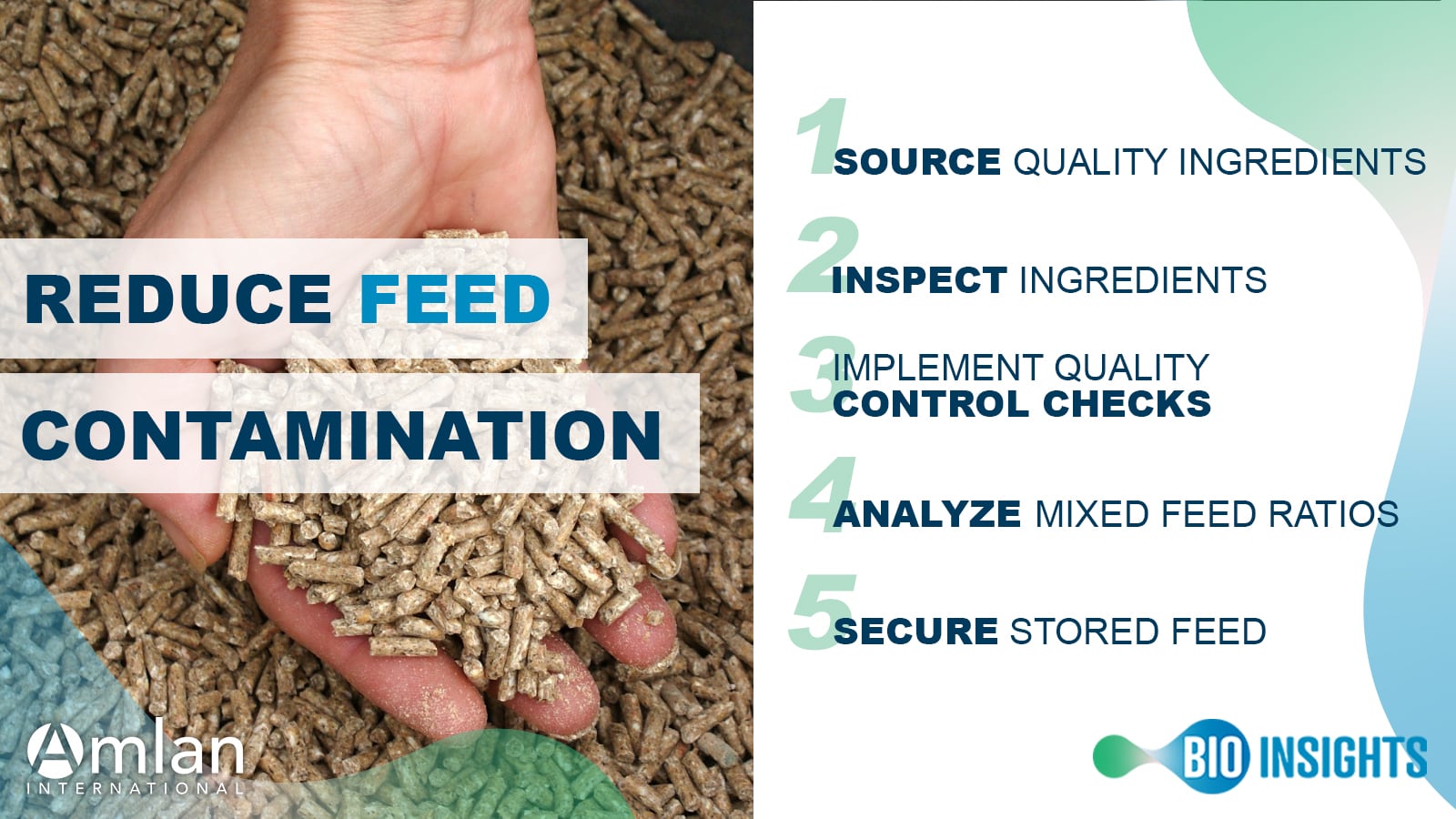Maintaining high-quality standards during livestock and poultry feed manufacturing is not only important to protect the health of the herd or flock, but as the end consumer, the health of people as well. The productivity of livestock and poultry can also be reduced if feed is not manufactured or stored correctly and becomes contaminated with pathogens, biotoxins or chemical residues.
Feed Manufacturing Guidelines
In many countries, feed production has strict compliance guidelines that cover manufacturing as well as workplace safety, environmental, transportation and trade regulations. The feed production regulations provide guidance on various issues including feeding animal protein to animals, the use of antibiotics in feed for non-medicative purposes and feed manufacturing standards. For countries without feed production regulations, the FAO Global Feed Safety Platform provides many useful resources on how to manufacture safe and sustainable feed.
Best Practices for Safe Feed
Having trained and competent personnel is one of the first steps in ensuring feed is manufactured safely and correctly. Training programs should include continuing education opportunities that also keep up to date with the latest recommendations and regulations for feed manufacturing. Some training programs are available online, such as those offered by the National Grain and Feed Association (NGFA). Examples of the topics included in the NGFA training modules include manufacturing processes, pelleting, feed sampling and shipping.
Safe feed starts with the raw ingredients, so these should be purchased from reputable suppliers that have proven safety and quality records. Each load of ingredients should be inspected for integrity, quality and evidence of contaminants. During processing, quality control checks should be in place to ensure a consistent and safe final product. This includes analyzing mixed feed for the correct concentrations of nutrients (particularly minerals) and screening for toxins. Equipment used in the mill should also be checked to ensure it’s working correctly. The finished feed should be stored in an area the prevents contamination and lessens the risk of deterioration. Collecting feed samples (from raw and finished products) and retaining them short-term can help with traceability if there is an issue with the feed.
Feed Contamination Issues
If feed is not handled, stored and transported correctly, any pathogens in the feed could be passed onto livestock and poultry (and people in some cases). Pelleted feed that has undergone heat treatment with steam can reduce some of the bacterial load, but heat treatment does not make the feed sterile.
Common pathogens and diseases that can be transmitted through feed include:
- E. coli O157:H7
- Salmonella
- Listeria
- Campylobacter
- Mycotoxins (toxins from fungi)
Mycotoxin Issues and Solutions
If environmental conditions are favorable, mycotoxins can contaminate feed either before harvest or during processing and storage. Mycotoxins are produced by a variety of fungi species, all of which proliferate under different ambient temperature and moisture or humidity conditions.
Raw ingredients and finished feed can be tested to determine if it is contaminated with mycotoxins and at what concentration. BioInsights Mycotoxin Diagnostic Services, offered by Amlan International, can test feed on-site and provide an accurate quantitative result within 10 minutes. If the test identifies mycotoxins in the feed, Amlan International’s dose calculator can be used to determine the optimal dose of adsorbents, such as Calibrin®-Z, to use in the feed.
Manufacturing safe feed is not only important for the health of livestock and poultry but also productivity. There are many procedures that can be employed to reduce the risk of feed contamination during manufacture. However, if contamination does occur, using products like Calibrin-Z can help reduce the effects of biotoxins on the health and productivity of livestock and poultry. Calibrin-Z can also be used prophylactically to help defend the flock or herd from disease outbreaks.

